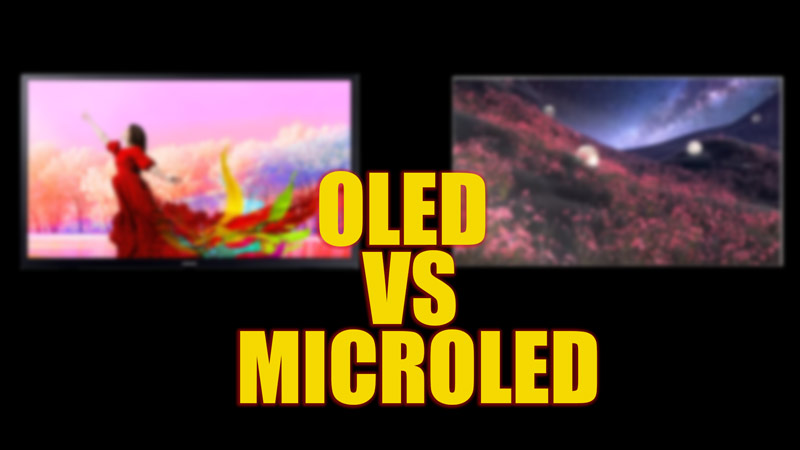
If you are looking for a new TV or monitor, you might have come across the terms OLED and MicroLED. These are two types of display technologies that offer different advantages and disadvantages. Hence, this OLED vs MicroLED guide aims to help you distinguish between these two display technologies.
OLED vs MicroLED: Comparison and Differences (2023)
Both OLED and MicroLED are promising display technologies that offer superior image quality and performance. However, they also have their own limitations and trade-offs. Depending on your preferences and budget, you might choose one over the other. Hence, here is the OLED vs MicroLED differences:
OLED

OLED stands for organic light-emitting diode. It is a display technology that uses organic materials that emit light when an electric current passes through them. OLED displays have individual pixels that can turn on and off independently, which means they can produce perfect blacks and high contrast ratios. OLED displays also have wide viewing angles, fast response times, and low power consumption. However, OLED displays also have some drawbacks, such as limited brightness, susceptibility to burn-in, and high cost.
MicroLED

MicroLED stands for the micro-light-emitting diode. It is a display technology that uses microscopic LEDs that emit light when an electric current passes through them. MicroLED displays also have individual pixels that can turn on and off independently, which means they can produce perfect blacks and high contrast ratios. MicroLED displays also have high brightness, wide color gamut, long lifespan, and low power consumption. However, MicroLED displays also have some challenges, such as difficulty in mass production, scalability issues, and high cost.
Conclusion
The main difference between OLED and MicroLED is the type of light-emitting material they use. OLED uses organic materials that are prone to degradation over time, while MicroLED uses inorganic materials that are more stable and durable. Another difference is the size of the pixels. OLED pixels are larger than MicroLED pixels, which means MicroLED displays can achieve higher resolution and pixel density. However, this also makes MicroLED displays harder to manufacture and more expensive. Hence, if you want large pixel LED pixels which are affordable, you can go for OLED. But if you want a stable LED display that lasts long that gives a high contrasting display, you should go for a MicroLED display TV. Additionally, we suggest using OLED display TVs for home usage. But if you are considering buying a TV for corporate purposes, consider purchasing MicroLED TV displays.
With that OLED vs MicroLED comparison guide comes to an end. Also, check out our other comparison guides, such as Oppo Find N2 vs Samsung Galaxy Z Fold 4 or iPhone 14 Pro vs Pixel 7 Pro.
